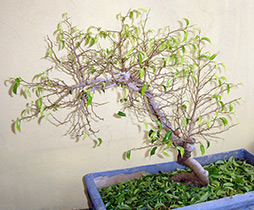
Ficus benjamin sheds leaves. Why ficus benjamin sheds leaves what to do
It was little known to domestic flower growers, and today it has become one of the most common ficuses grown by connoisseurs. indoor plants, both in their own apartments and in offices. Such popularity is due to its unique ability to give a sense of wildlife. Ficus most fully reflects the idea of an urban person about a “real” tree due to its dense crown and small oval leathery leaves with a pointed tip. In addition, this plant fits well into any interior, growing in spacious bright rooms with a large two-meter bush or remaining a low openwork tree on the windowsills of city apartments.
However, sometimes the owners of Ficus Benjamin are also faced with its unpleasant feature - dropping leaves for reasons that are not entirely clear. Most often, exotic varieties with unusual shape leaves, in particular, "Baroque" (Barok). This miniature whim with strongly twisted small leaves is generally very difficult to please. But the Natasha variety, on the contrary, has established itself as unpretentious and does not require the creation of special conditions.
You can list some of the most common reasons why Ficus Benjamina loses leaves, and give some tips on how to avoid such a nuisance in the future.
lack of lighting. Ficus is very demanding on the level of illumination, and it needs bright diffused light. all year round, and the length of daylight hours for it should be at least 10 - 12 hours a day. If you do not provide him with the appropriate conditions, especially in the dark winter, the leaves will begin to turn pale and fall off.
Save the situation will help additional sources, for example, specialized fluorescent lamps OSRAM Fluora. In this case, it is advisable to use two lamps at once, hanging them from different sides at a distance of 50 - 60 cm from the plant.
However, excess lighting, especially direct sunlight, will also lead to leaf fall due to sunburn or overheating.
Temperature. Ficus Benjamina prefers moderately warm temperatures, from 18 to 23 ° C in summer, and not lower than 16 ° C in winter. Higher or lower values may be one of the reasons why the plant sheds leaves, especially in winter, when the central heating batteries are running.
drafts. This plant does not tolerate temperature changes and drafts. Therefore, when airing a room with a growing ficus, one must be very careful and first protect the tree from cold air from the street, as well as from hot air currents from batteries.
Wrong watering. The plant often suffers from excessive watering when kept cool and from drought in the heat. And it, as a rule, expresses its dissatisfaction with “baldness”. To avoid problems with watering, you need to choose a mode in which the earth in the pot will have time to dry out a little (about 2 - 3 cm deep).

Hard or cold water should not be used for irrigation, it should be given time to settle well and warm up to room temperature.
A change of scenery. Stress from a change of scenery is another of the most common causes of leaf shedding. Moreover, the plant feels this stress not only after being transferred from a store or from friends, but also when moving from place to place.
To increase stress resistance, the ficus will have to arrange a real, but, fortunately, temporary resort. It is necessary to increase the level of illumination with the help of specialized fitolamps; create high local humidity by placing a pot with a plant on a pallet with wet expanded clay or laying it wet, and for large plants, use household steam generators; protect against sudden changes in temperature, carefully wrapped when buying or transferring from house to house.
In addition, for Ficus Benjamin, it is advisable to choose in advance a place that best meets all its requirements, where you can create an environment close to natural conditions.
Soil depletion. Like all plants, ficus needs periodic feeding. In depleted soil, it slows down in development, releasing new leaves of a much smaller size and discarding old ones.
To obtain a healthy green tree during the active growing season, it is fed once every two weeks with specialized complex ones. In addition, young specimens are transplanted annually into fresh soil, and in adult large plants, the topsoil is changed annually, carefully removing the old soil until the upper roots appear.
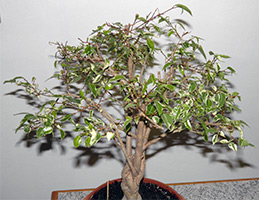
Pests. Another reason that gives an answer to the question of why ficus sheds leaves is defeat. And most often this plant is attacked, and. At the first signs of infection, young large-leaved plants should be washed thoroughly under a warm (about 45 ° C) shower, after covering the soil in a pot with polyethylene. It is almost impossible to wash large plants or exotic varieties with twisted leaves, so their owners can only treat the crown of the tree with specialized insecticidal preparations, such as Aktara, Aktellik or Fitoverm.
natural causes. If the fall of the leaves is of a single nature, while the crown loses only the old, lower leaves, then these losses can be explained by a natural process inherent in all living organisms. Thus, the ficus grows, the formation of its trunk.
What to do to return an attractive appearance to Ficus Benjamin? If mass leaf fall could not be avoided, but the cause of this trouble was identified and eliminated, then forming pruning will help restore its former attractiveness to the tree. Ficus is one of the plants that calmly perceives this procedure, and even deep pruning will not hurt it. Pretty soon, he will begin to grow new replacement shoots and be covered with fresh foliage.
According to the ancient teachings of Feng Shui, ficus is a plant that helps create an atmosphere for energetic and efficient work, sobriety of mind and concentration. In addition, ficus purifies the air, making it fresher, and allows you to create a cozy atmosphere in the room. Today, many varieties of ficus are known: fig, fig, fig tree, ficus Melanie and many others that are grown in garden plots and in apartments. However, we will discuss the problem that often prevents the growth of one of the most popular types of houseplant - Benjamin's ficus, and find out what causes Benjamin's ficus to shed its leaves and how to deal with it.
General information about the plant
Ficus Benjamin is native to Australia, the Philippines, India and China. Here on open field, ficuses of this subspecies can reach a height of twenty meters. At home, this plant grows up to three meters. Ficus Benjamin is a tree or shrub with a grayish bark, its branches are drooping, and the leaves are slightly oblong.
The color of the foliage can be different: variegated, plain, and also bordered. The leaves also differ in their shape. They are straight and wavy, and in some species the leaves are naturally twisted. Ficus Benjamin fruits are not edible.
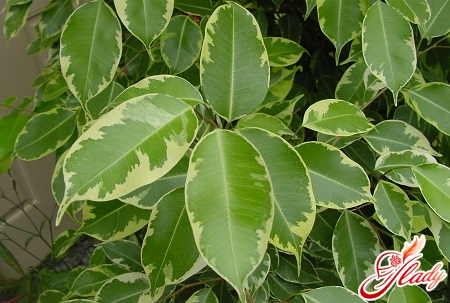
Frequent growing problems
Despite the fact that the ficus cannot be called the most demanding plant, some problems can still make themselves felt in the process of its growth. And, of course, the first of them is the fall of foliage. Why is this happening? If you observe that the leaves are gradually crushed, begin to turn yellow and fall off, then this indicates a severe lack of nutrients in the soil composition. In this situation, it is recommended to transplant into a better nutrient soil.
Sometimes the foliage loses color, small light spots appear on it, and the edges turn yellow. This indicates an excess in watering. To normalize the condition of the plant, it is important to give the soil time to dry completely. Only after the earth becomes dry, the plant needs to be watered again. If you do not follow this rule, the root system may fester.
Another problem is wrinkled and dried leaves. Such external manifestations indicate the overdrying of the soil layer and excessively dry air. Perhaps the ficus suffered from sunburn, which provoked direct sunlight. What to do in this case? Just shade the plant or find a more suitable place for it.
If the leaves are young, get the right amount of the necessary substances, but quickly fly around, then the problem can be caused by anything. For example, a lack of light or a sudden change in climatic conditions, because it is known that ficuses of any variety react very painfully to any movements. For them, elementary changes of place within the room are undesirable, not to mention the change of cities or countries.
What to do if the ficus loses only the lower leaves? In general, such a phenomenon is rather the norm, and not a problem, in particular, in the case of growing a plant in a room. In this case, the trunk should not be completely exposed. The fall of the lower foliage should be uniform. Complete exposure of the trunk can be provoked by an untimely transplant or soil that lacks vitamins.
And one more problem - brown spots. As a rule, they appear at the tips of the foliage, after which the leaves fall off. This is usually due to excessively high temperature and dry air in the room. Also, spots can occur in case of improper feeding - no need to abuse fertilizers.
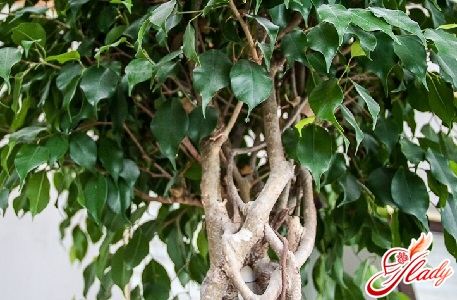
General rules for caring for ficus Benjamin
Among all the varieties of Benjamin's ficus, it stands out for its increased sensitivity; it can be called touchy. As soon as you bring the plant pot home, choose the best place for it. Deal with it once and for all. No need to constantly rearrange and rotate, move or, even worse, transport. Try to avoid drafts, dampness, darkness at the location of the tree - ficus leaves do not tolerate this.
In order for Benjamin's ficus to grow quickly and well, provide it with a temperature of twenty-five degrees in the summer. In winter, it must be lowered to sixteen. Remember that the temperature minimum that this plant can endure is ten degrees, at least, so try not to violate such boundaries even in emergency cases. It is recommended to ventilate the room regularly, but this must be done carefully so that the ficus does not slip through.
Humidity is important. For the content of ficus Benjamin, you need to provide an indicator of 70%, well, or at least at least 50%. In summer and winter, when the air in the room is very dry, do not forget to spray, and once a month arrange a kind of “shower” for the plant. This must be done so that the plant does not experience a lack of fluid and moisture.
Showering is easy. Transfer the ficus to the bathroom, covering the ground with a special film. Now water the plant using warm water. After washing is completed, leave the ficus in the bathroom to dry. Remember: if the ficus is suddenly supercooled, then its foliage will fade and fall off. And to avoid the appearance of white salt spots on the leaves, use soft settled water.
It is equally important to follow the rules of watering. Use settled or boiled water for this, as mentioned above. It is advisable to boil it, and then cool it to room temperature. Many experts advise heating water even up to fifty degrees. You can add some fertilizer to it.
To prevent the ficus from dropping leaves, optimize watering - you do not need to make a special schedule. Just periodically probe the soil layer and, when you see that it is dry, feel free to water. It is recommended to pour the liquid in two or three doses - it should completely cover the entire top layer. Thirty minutes after watering, excess liquid will drain into the pan through the drainage holes - drain this water. Your main task is to prevent drying out or excess moisture in the soil layer.
There are some lighting rules, because the brightness and color of the leaves depend on it. This is especially true for variegated varieties. The place where the ficus is located should be well lit, while making sure that direct rays do not fall on the plant. If we talk about uniformly colored varieties, then they are resistant to shading, but variegated ficuses will not tolerate even a small shadow, because of it, their leaves often become discolored and fall off. In winter, it is worth providing the ficus with an additional source of lighting, for which you can use special lamps.
Now about the transplant: when is it better to carry it out and how to do it correctly? Ficus should be repotted every two years, after the plant reaches the age of four. How do you know when it's time for a transplant? An earthen ball braided with roots will serve as a signal.
It is important to do the transplant correctly. First of all, the plant must be watered and removed from the pot. The layer of earth that is on top is removed by brushing off the roots, after which they are placed in a larger pot on a drainage layer sprinkled with earth. After that, the lump must be covered with earth on each side. If you cannot transplant the ficus because of its size, then just change the soil top layer about a couple of times a year.
Answering the question why some ficus leaves fall off and turn yellow, one cannot but mention the correct substrate and fertilizers, because a lot depends on these two factors. Get a special substrate for Benjamin's ficus. Give preference to the soil of a loose structure - this will allow the plant to take root more densely. After the root system gets stronger, you can transplant the ficus into soil that is denser in texture.
When choosing top dressing, focus on the substrate chosen in advance, as well as on the age of the ficus. Usually top dressing and fertilizers are applied in the warm spring-summer period. This should be done every few weeks, while alternating organic matter with mineral fertilizers and substances.
In the cold, winter period, you do not need to fertilize the plant - give the ficus a break from chemistry. However, if you have created the most comfortable conditions for your plant: proper lighting, the right temperature and humidity, then you can add fertilizers to the soil, but no more than once every two months. In this case, top dressing should have a weak concentration.
Yes, sometimes ficus sheds leaves, turns yellow, crumbles - gives its owners a reason to be upset. Any plant can be compared to a baby that requires careful care, and ficus is no exception. By providing this tree with proper conditions for existence, taking care of it and caring for it daily, you will grow a delightful oriental plant that will decorate your home and make it even more comfortable than before.
Indoor plants decorate the house and make the air in it fresh and clean. The majestic ficus Benjamin is a treasure, the care of which will ensure the well-being of the household.
Among indoor plants, the leading position is occupied by Benjamin's ficus - having green leaves. beautiful tree, which even in cramped room conditions can reach three meters in height. Of course, such dimensions are feasible due to proper plant care.
However, it is not always possible to control the climate inside the house and manipulate the ficus. It happens that unexpectedly for you, Benjamin's ficus drops its leaves. What to do, what help to provide to your beloved plant? Unfortunately, this disease is not an accident. Falling leaves can be the result of many reasons.
Causes of falling leaves
Please note that if the ficus sheds leaves from the bottom of the trunk and this happens in the autumn or winter months, then there is no need to worry. Loss of ficus from 10% to 20% of the leaves is the norm. With the onset of spring, the plant will acquire new leaves. The leaf fall in summer and spring is alarming, when the entire ficus is actively growing. Falling more than 20% of the leaves, regardless of the season, also speaks of problems. ![]()
The following causes of leaf fall can be identified:
- Change of place. Imagine: the ficus was grown in greenhouse conditions, and when buying it, it experiences transportation, transplantation, showers, pruning and other stress. Finding a new home will require adaptations that even old plants are subject to.
- excess water. Excess water is caused by too frequent watering and stagnant water. This leads to decay of the root system. When water stagnates in a pot, the top layer of the earth does not dry out, which is why the shoots droop and die. Excess water in the soil can be identified by the smell of rot emanating from it, as well as by darkened leaves.
- Lack of water. When wondering why ficus leaves fall, pay attention to the frequency of watering. To diagnose a lack of moisture, look at the leaves - they curl and dry, at the branches - they are fragile and dry, and also at the soil - it lags behind the walls of the pot.
- lack of light. This disease is especially common during the winter months. The reason is the short daylight hours. You can identify the lack of light by the fact that the leaves turn yellow and fall off. They also get smaller as they grow.
- Low air humidity. This problem is most likely to be encountered during the heating season or the hot summer season. With a lack of air humidity, the ends of the leaves of ficus Benjamin turn brown. It will save the location away from the battery in winter and spraying in summer.
- hypothermia. It is a consequence of the low temperature in the room - below 16 degrees Celsius, as well as its jumps. Hypothermia can also come from watering with cold water, as well as from the contact of the plant with the window glass.
- Draft. Take into account not only open windows and balconies, but also fans, air conditioners. The room, of course, must be ventilated. However, you should not direct the air flow to the ficus.
- Nutrient deficiency. Micronutrient deficiencies result in stunted growth during active periods in spring and summer, pale coloration and shredding of leaves, and finally leaf drop. The plant lacks nutrition.
- Disease. The defeat of the plant by pests is accessible to the naked eye: the leaves, the trunk acquire a different shade, become covered with pigmentation, deform, etc.
- Burn of the root system. Thinking about why the ficus sheds leaves, remember, maybe you fertilized the plant without first moistening the soil with water.
- Soil pH deviation. We are talking about alkaline or acid deviation. Be that as it may, the ficus ceases to perceive vitamins, converting them into substances toxic to itself. The optimum pH value is between 6.5 and 7.0. It can be either weak or neutral reaction.
- Excess pesticides. By violating the dosage of chemicals while protecting the ficus, you convert them into poison. This poison is detrimental not only to bacteria and insects, fungi, but also to all living elements - including the plant itself.
Leaf drop prevention
In order not to face such a problem as falling leaves from ficus Benjamin, follow the recommendations:
- Place the plant in a fairly bright place, but not exposed to direct sunlight. When placing the ficus on the windowsill, protect it with parchment attached to the window.
- Observe the temperature - not lower than 16 degrees and not higher than 25 degrees Celsius.
- Spray the plant regularly. In the summer, once a week, carry out such a water procedure as a shower.
- Maintain light moisture in the soil, and loosen it periodically.
- Transplant the ficus every two years in the spring into a larger pot.
Ficus benjamina is unpretentious plant. However, this does not mean that it does not require attention. It is enough to regularly water the plant in small quantities with warm water in the warm season and once every ten days in the winter months. A hot day will additionally require spraying. Also observe the conditions to refresh the flower - the ficus loves partial shade and does not tolerate a change of place. As you can see, these are easy-to-follow recommendations, following which you can enjoy the beauty of a tree for many years. 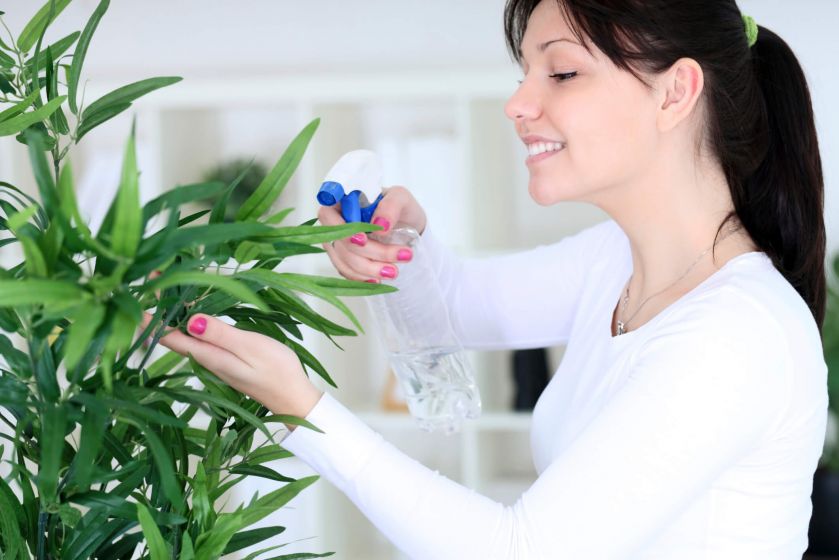
Ficus Benjamin is a beautiful evergreen plant that will decorate any interior. You can make it thin and tall or small and lush. As mentioned above, ficus can grow up to three meters. As a rule, this plant grows exactly up, depriving attention of lateral shoots. In order to prevent the growth of the ficus, but provoke an increase in its width, it is necessary to cut off the upper part of the trunk. Next, the section is wiped with a cotton swab dipped in hydrogen peroxide.
Why do ficus leaves fall
Ficus benjamina is one of the most popular houseplants. He liked many flower growers for his luxurious appearance and abundance of species. But this inhabitant of the tropics is extremely capricious and fastidious in care. Of all the plant species available, Benjamin's ficus sheds its leaves more often than others. They, not looking at the beauty, are weak and painfully respond to all sorts of unusual actions of the environment.
Why ficus benjamin sheds leaves
Dropping a small number of lower leaves in winter and autumn is a natural and inevitable process. But if the ficus Benjamin leaves fall abundantly, then you should find the cause, which most often happens at once several.
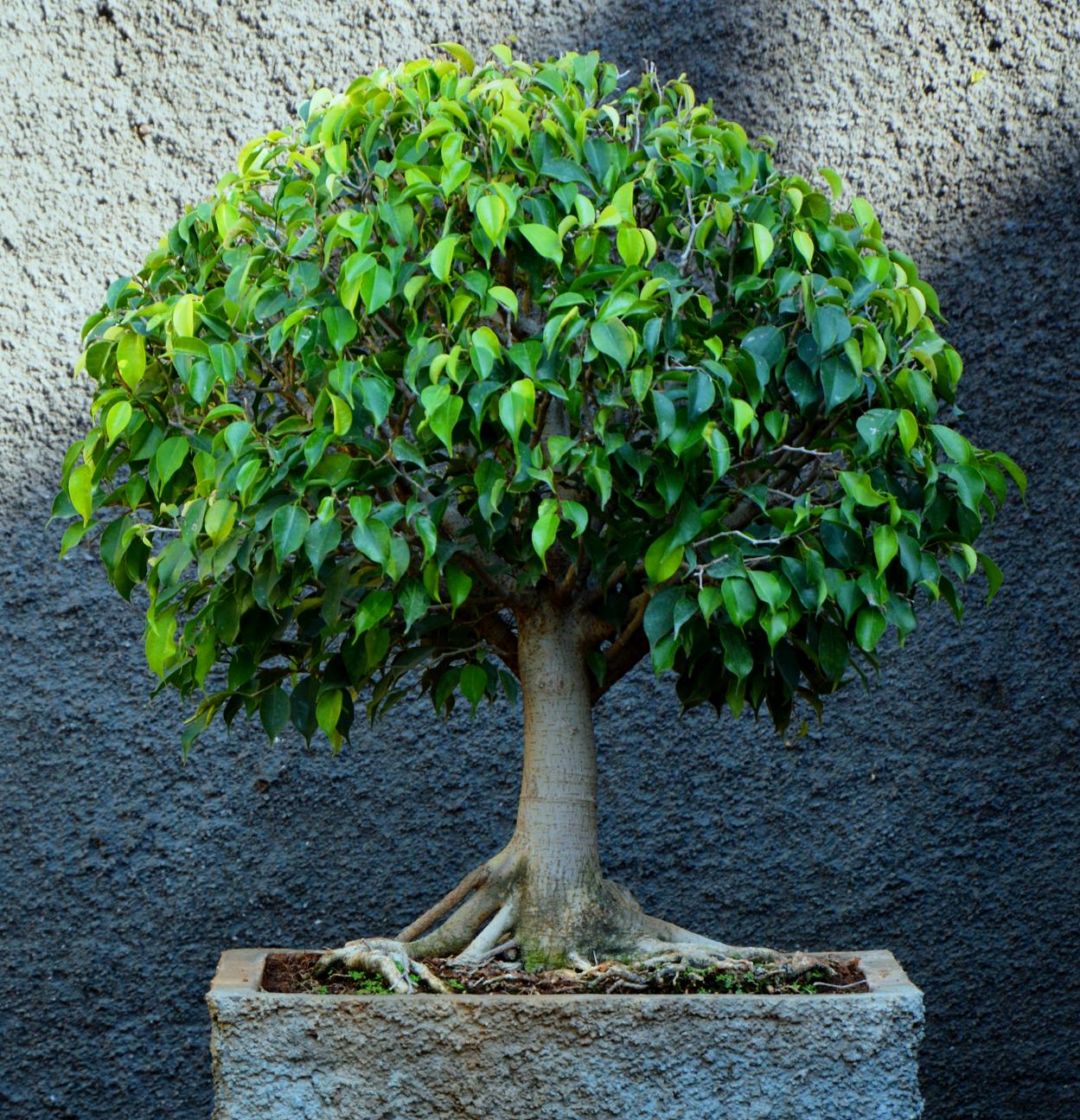
Reasons for dropping leaves in ficus Benjamin
Adaptation
A plant purchased in a store is more often only grown in greenhouse conditions and has survived transportation. He will need more than a month to adjust to the new climatic conditions, which houses will differ from the usual ones.
Any ficus can react poorly to a change of location, subsequent transplantation and pruning.
Too much or too little water
With excessive watering, when the top layer of the earth does not have time to dry out, Benjamin's ficus throws off leaves that acquire a dark color. Also, young shoots can rot and completely die off.
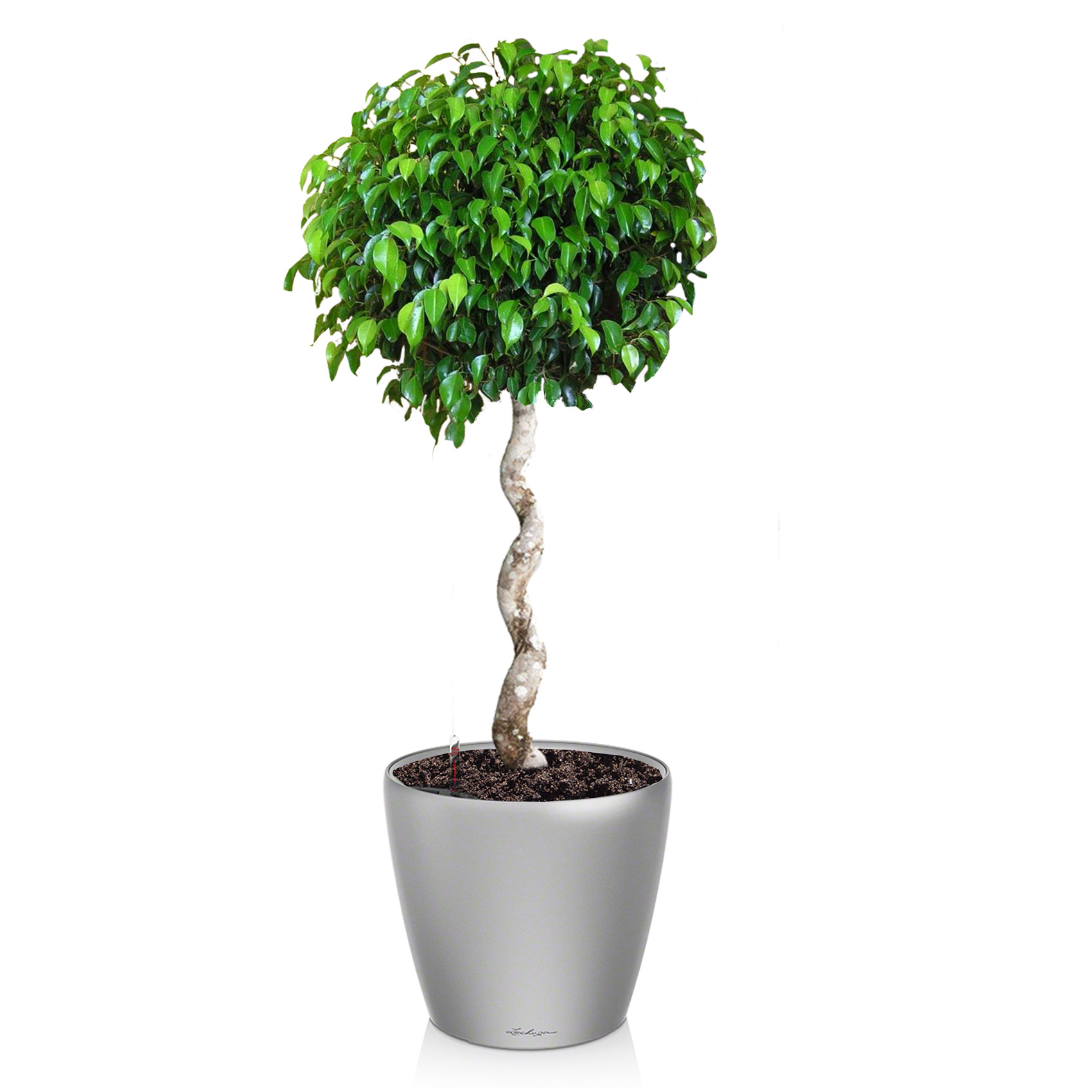
With insufficient watering, the houseplant becomes brittle, the leaves curl up, turn yellow and fly around.
low light
For functional growth and good health, the flower needs a long daylight hours, so that in the cool season, when there is less natural light, it can stretch towards the window, dropping foliage from the lower shoots. Varieties of motley ficus are especially picky about light. In winter, they can turn yellow and lose an extremely large amount of foliage.
Dry air
Why does Benjamin's ficus shed its leaves while in a warm room? The reason, most likely, is dry air, which becomes so with the constant operation of heating devices. The same can happen in hot summers.
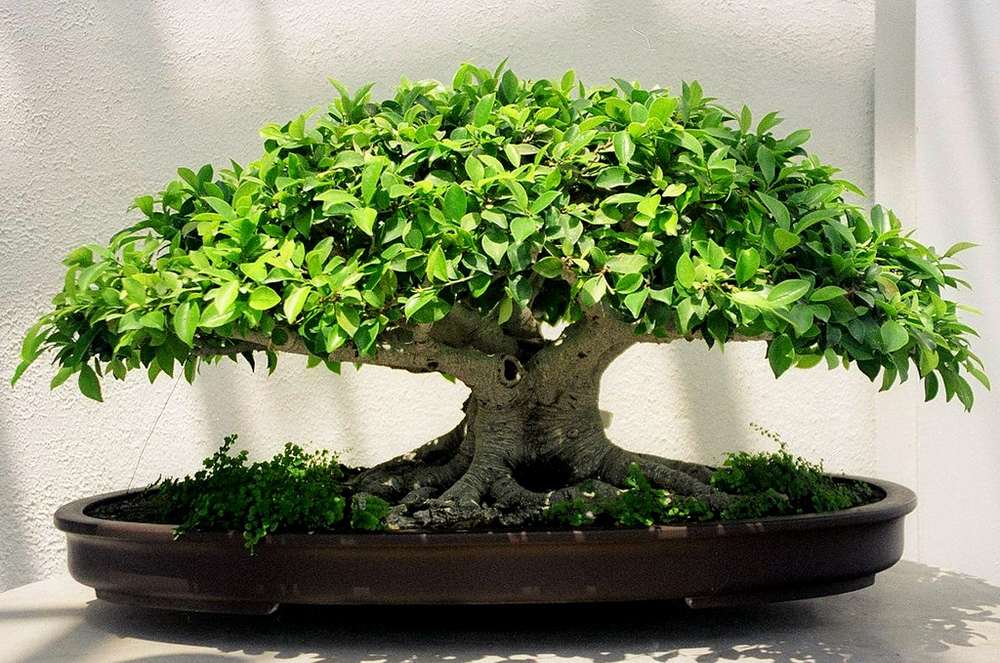
Plants do not tolerate these conditions. Their leaves turn brown, wrinkled and soon fall off.
Cold and drafts
Sharp fluctuations in temperature or its drop to 16 ° C is dangerous for heat-loving ficus. When in the cold, he gets frostbite, as a result of which the branches break off, and the foliage falls off.
Important! Drafts are also his worst enemies, and they can even arise from the air conditioner.
Too little or too much fertilizer
Plants should not be fertilized very often - a huge amount of chemicals is tantamount to poison.
But the lack of feeding can lead to shredding and falling leaves.
Diseases and pests of ficus Benjamin
When dropping leaves, it is necessary to look closely at the ficus to detect possible pests. If these are not identified, then it is worth paying attention to the color of the leaves - often its change indicates a disease of the flower.
Why ficus benjamin sheds leaves what to do
When the reason why Benjamin's ficus leaves fall is clear, it is necessary to begin to fix the problem. Knowing the whims of a delicate flower, this trouble can be completely prevented. To do this, you must adhere to certain rules.
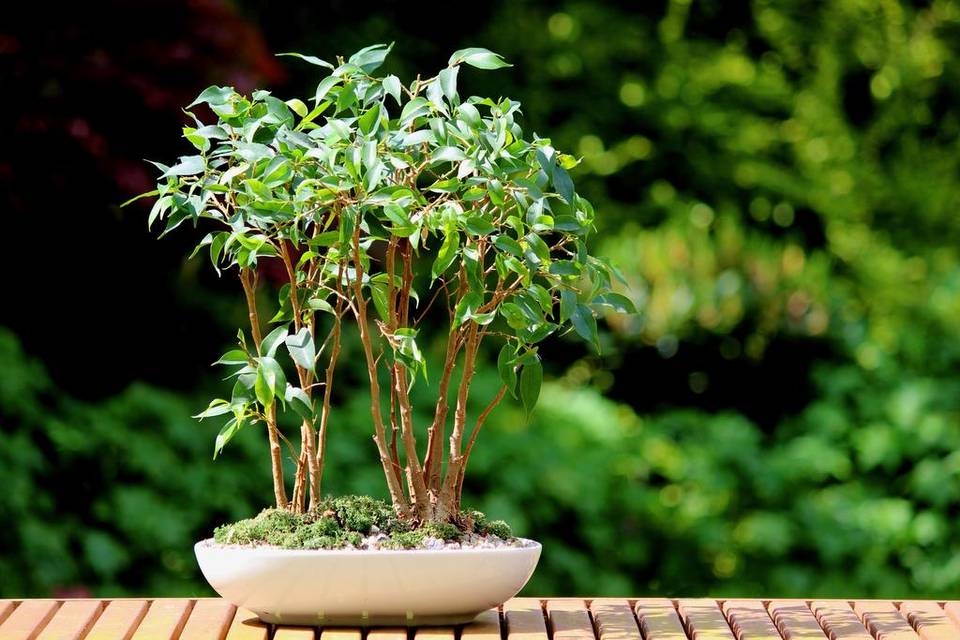
Deliberate acquisition of Ficus Benjamin
Before buying a flower, you need to pay attention to its conditions in the store. At home, you need to create an atmosphere very close to the previous place of cultivation. So, if the ficus was chosen in a special store or nursery, where comfortable air humidity was maintained for it, and artificial lighting was used, then these conditions must be repeated at home. In the absence of such an opportunity, it is better to buy a flower in a store where there are no special devices.
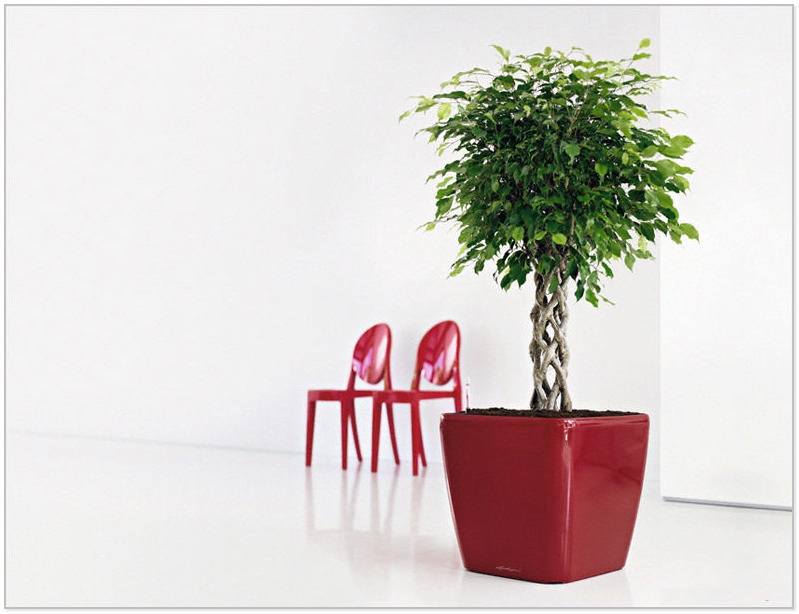
On a note! In order not to injure the plant with a temperature difference, the purchase must be made in the warm season.
Creating the Right Conditions for Ficus Benjamin
Ficus Benjamin needs to prepare a favorable space in the house. It is advisable to make it unchanged and exclude the upcoming movement of the flower.
Be sure to protect the plant from drafts. They, even the most insignificant, can greatly annoy the heat-loving Benjamin. Places on window sills and at doorways are not suitable for its maintenance. It is worth considering well how the plant will feel in the summer - it is fenced off from fans and air conditioners.
This tropical plant is accustomed to a long daylight hours, due to which, when it is reduced, it can lose foliage. If possible, it is better to place the ficus closer to the light or buy a special lamp for it. But you should avoid direct sunlight, as some types of ficus have every chance of getting burns.
If the flower began to throw off the foliage - be sure to check the soil. Perhaps he does not receive the proper amount of water or the pot for keeping him is very small. In this case, the plant must be transplanted immediately, otherwise the foliage will be faded and begin to fall off.
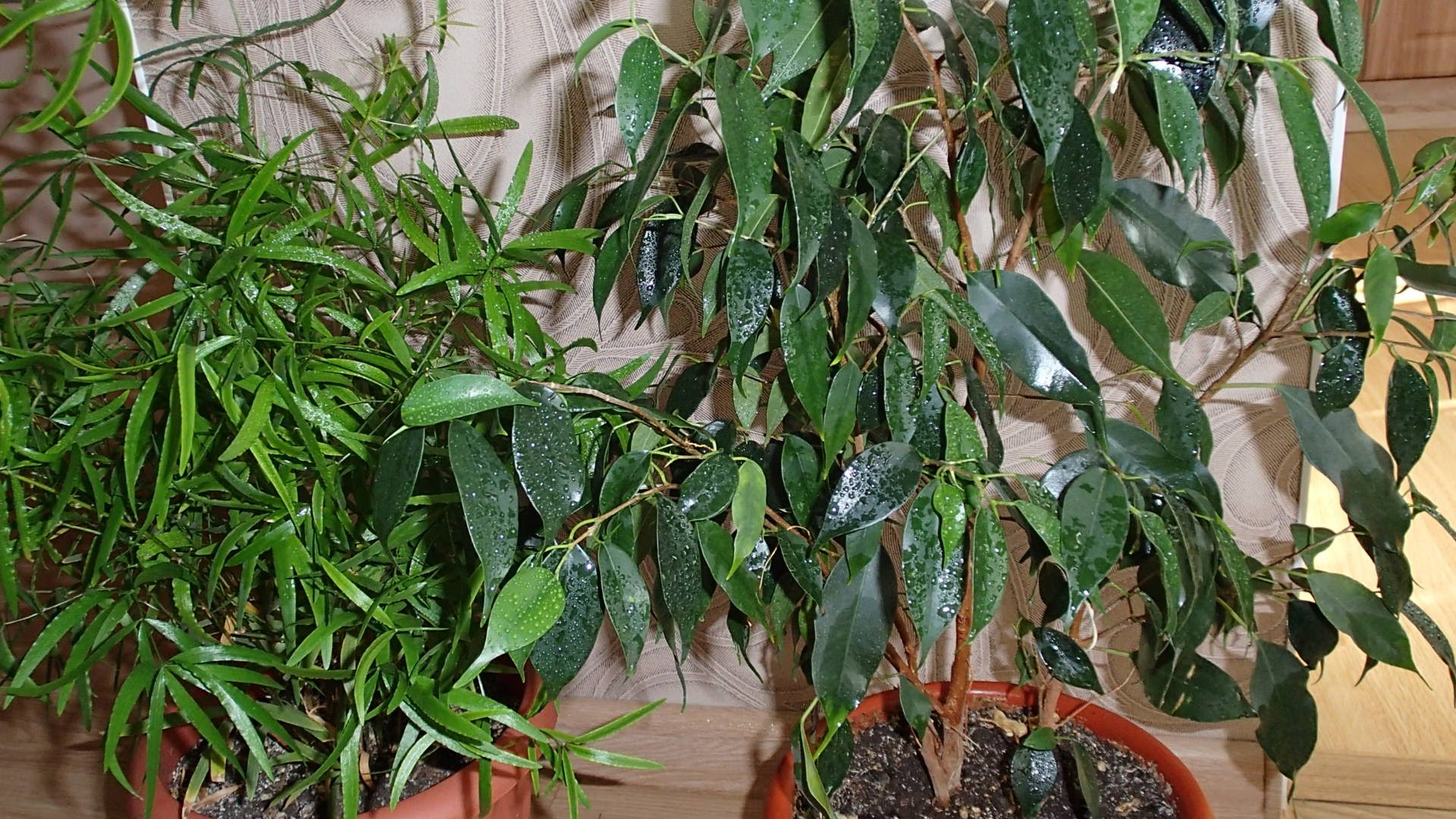
Another problem can be overwatering. With an excess of water in the substrate, the ficus begins to die from the roots, lose foliage and young shoots. With a constant accumulation of water in the pan, it is necessary to moderate watering and take care only of spraying the plant.
If the cause of leaf fall is pests, then this will be immediately noticeable. Usually this is facilitated by spider mites, scale insects or mealybugs, which, when viewed from the stems, are easy to distinguish and destroy.
When obvious circumstances are not found, why Benjamin's ficus throws off its leaves, it is necessary to pay attention to the soil - ficuses often suffer from a lack of magnesium. In this case, the soil must be fertilized with a solution of dolomite flour or magnesium sulfate. perfect time feeding from May to September, when the plant is in the phase of functional growth.
If this information turned out to be useful to you Why benjamin's ficus sheds leaves what to do on the site, you can leave a comment below.
Among the many indoor plants, ficus, which has reached Russia from tropical forests and has several species, is in special demand. It is quite unpretentious, easily fits into any interior and does not require particularly careful personal care. And, nevertheless, sometimes the owners of this evergreen "resident" of the apartment have a number of questions. Most often they boil down to why ficus leaves fall off at a frequency exceeding the established norm.
Why do ficus leaves fall?
Nature ordered in such a way that 3 years after planting, the ficus leaves are replaced. Therefore, its owners usually do not pay attention to such a reincarnation. Also, with climate change and drought, some of the ficus species lose their leaves so that there is no strong need for moisture. During this period, they need to create special conditions, which include low temperatures and rare watering.
It happens that the plant is still very young, the conditions are fully consistent with the required, and the leaf fall still begins. And, quite impressive. Similar event requires a search for causes. Because it is better to be safe than to forget about the problem.
The most obvious prerequisite for leaf renewal can be pests. Everything is simple here: if, upon careful examination of the plant, deformations and pigmentation are found, then it was struck by a disease, fungus or microorganism. Some pests can be seen even without special devices.
Several factors usually lead to their appearance, which also contribute to the shedding of leaves in ficus.
- Wrong climate for the plant. Either too high ambient temperature, or insufficient humidity. This is often indicated by curling leaves.
- High humidity and low temperatures are also bad for the plant. Nor will he appreciate sudden changes in climate. Moreover, not only a general decrease in air temperature, but also a local one can lead to hypothermia. The latter occurs due to improper watering, contact with cold surfaces (window glass in winter). It is impossible not to mention the draft, which is harmful not only to humans, but also to the plant. It appears even from the fan and air conditioner with a direct direction of the cold air flow.
- Soil condition. Excessive moisture or dryness affects leaf fall. Overflow is usually accompanied by a characteristic aroma of decay.
- Violation of the acid-base balance of the soil in which the plant is planted. The optimum pH value is 6.8. Anything that deviates from this figure by more than 0.2 leads to an increase in toxicity. It leads to a deficiency of a number of nutrients and can even "kill" the plant.
- An excess of chemicals that the plant is treated with in order to control pests or prevent their occurrence. It is worth remembering here that all pesticides, insecticides and similar agents should be used only when absolutely necessary and with strict adherence to the dosage prescribed in the instructions.
- In addition, the fact that the ficus begins to shed its foliage in response to any environmental changes cannot be discounted. For example, for an elementary change of location. Problems are possible not only when moving to another apartment, but also when moving the pot to the next room. Therefore, it is better to choose a permanent place for the pot in advance.
- Do not be afraid if, immediately after buying a plant, it will “greet” the owners with a thinning crown. The same reaction is characteristic of ficus when pruning and transplanting. In addition, he has a negative attitude to the poor lighting that is typical for winter.
- And the last factor in ficus leaf fall that needs to be mentioned is the possible burn damage at the roots. They occur in most cases when fertilizers are applied to dry soil.
The thinning of the crown and the exposure of the trunk can also signal the elementary aging of the plant. The fall of the lower part of the foliage of the ficus in the absence of other problems is quite normal.
Ficus sheds leaves. What to do?
In order not to encounter ficus acclimatization and, as a result, leaf fall, it must be bought where Environment as close as possible to the one in which he will live. This will allow the plant to endure the move with minimal stress. If all stores have similar conditions, they will have to be recreated at home. For example, purchase additional lamps and a humidifier. It is also not recommended to purchase a plant in the cold season. Ficus will not appreciate the differences in street and room temperature.
The lack of light, from which all ficuses suffer, is compensated by changing its location, as well as the use of artificial lighting. The plant should receive its share of light exactly 12 hours.
Drafts, as a reason for the elimination of leaves, are also eliminated by transferring the ficus to another place. It should not be located near doors and vents, as well as in the path of the air flow of the air conditioner or fan.
A humidifier handles dry air. If you cannot afford such a unit at the moment, you can spray the plant daily from a spray bottle. It is necessary to carry out the procedure up to 3 times a day.
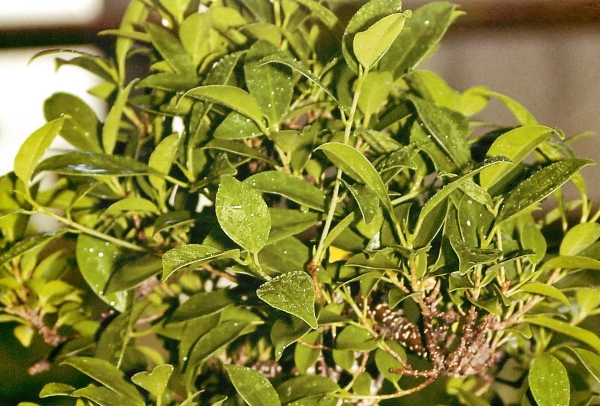
The causes of crown thinning associated with violations of the chemical composition of the soil and the disease of the plant itself are eliminated by transplanting and treating with appropriate chemicals. These are mainly insecticides of the Fitoverma type. It is worth knowing that the ficus does not appreciate the frequent change of soil. Therefore, the replacement of depleted soil is carried out by pouring new soil into the tub.